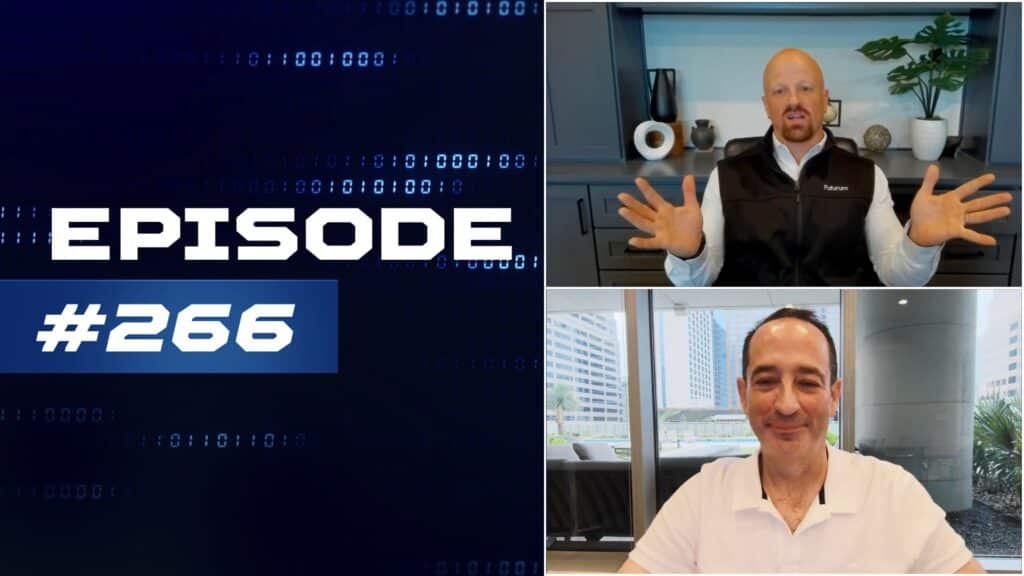Introduction
Linux, having just celebrated its 30th birthday in 2023, has crossed over from hobbyists and citizen developers who were early adopters to running mission-critical applications in highly regulated industries. It is set for a dynamic year in 2024. The Linux Distribution market is poised for an inflection point during the summer as CentOS support ends and many clients also have to make a decision around their Red Hat Enterprise Linux (RHEL) support.
In this dynamic scenario, alternatives abound, such as Rocky Linux, AlmaLinux, SUSE, Oracle, and OpenELA, which have all emerged as pivotal players, offering diverse options for users seeking stability, compatibility, and innovative solutions in the post-CentOS era. We also cannot forget the cloud providers such as Amazon Web Services (AWS) and Google for Linux options. As users navigate this terrain, the considerations extend beyond mere technical nuances to encompass factors such as community support, sustainability, and the strategic vision of these alternatives, shaping the future of Linux adoption.
The vision of Gregory Kurtzer, creator of CentOS, was to create a freely available Linux distribution that maintained a 1-to-1 binary compatibility with RHEL. However, the paradigm shift introduced by Red Hat toward CentOS Stream, adopting a rolling-release model, prompted Kurtzer to chart a new course with Rocky Linux, aiming to preserve the traditional CentOS experience.
Rocky Linux
Rocky Linux, an open source operating system (OS), prioritizes 1-to-1 binary compatibility with RHEL, a leading enterprise Linux distribution. It leverages public cloud instances and Universal Base Images for seamless migration from CentOS, ensuring RHEL compatibility. Focused on high-performance computing (HPC), AI, and machine learning (ML), Rocky Linux is tailored for performance-intensive tasks. It optimizes system resources, enhances scalability, and emphasizes speed and efficiency. Ideal for computational research, it offers a stable foundation for clusters and supercomputers, meeting the demands of complex workloads in HPC, AI, and ML.
In 2022, Rocky Linux received a $26 million investment from Ctrl IQ (CIQ), underscoring its development progress and community support. Its RHEL compatibility eases user transition, reflecting the developers’ commitment to a user-friendly and accessible operating system.
AlmaLinux, emerging from CloudLinux labs, initially aimed for RHEL binary compatibility but shifted to Application Binary Interface compatibility, using CentOS Stream source code. This strategy enhances flexibility and future-proofs the system, enabling uninterrupted running of RHEL-based applications, even those built on newer RHEL versions. Supported by a nonprofit structure and a $1 million annual sponsorship from CloudLinux, WebPros, and Black Host, AlmaLinux promises sustained, reliable, and secure enterprise-grade Linux solutions.
Comparing Different Options for Your IT Needs: A Look at Red Hat, SUSE, AWS, Oracle, Google, and OpenELA
Many users who are seeking alternatives to CentOS may find SUSE to be a strong contender alongside Rocky Linux and AlmaLinux. SUSE Linux Enterprise Server is equipped with enterprise-level features, and reliable support, and is fully compatible with RHEL. This makes it an excellent option for businesses that prioritize stability and reliability.
As Vojtech Pavlik, GM of SUSE’s Business Critical Linux group, discusses with The Futurum Group, Red Hat’s recent decision regarding source code availability has sent ripples throughout the Linux community, particularly impacting users dependent on RHEL. In response to this development, SUSE has strategically positioned itself by outlining a comprehensive product line, which includes Linux and Rancher.
SUSE’s approach to supporting mixed landscapes without vendor lock-in has garnered attention and interest. Notably, SUSE has announced a substantial $10 million investment to maintain a fork of the latest RHEL 9 code, providing an alternative for those who rely on RHEL sources. Early customer reactions to SUSE’s announcements and migration services have been positive, resulting in various deals on its new fork and other SUSE products such as Rancher.
Another option is SUSE Liberty, which emerges as a strategic choice for those seeking to transition from CentOS, offering a familiar yet innovative environment. It provides a seamless migration path, ensuring compatibility and stability, while introducing new features and enhancements to enrich the user experience in the Linux ecosystem. The recent moves by SUSE reflect the dynamic nature of the open source community and the strategic responses required to meet the evolving needs of users affected by significant shifts in the Linux ecosystem.
Red Hat’s Strategy
In another discussion with The Futurum Group, Gunnar Hellekson, GM and VP of RHEL at Red Hat, notes there has been a notable shift in its approach to CentOS Stream, providing users with a comprehensive overview of the changes in the CentOS ecosystem. The focus has been on understanding Red Hat’s strategy for the future of public RHEL-related source code releases, shedding light on the evolving release model.
The community’s reaction to these changes has been diverse, with discussions centered around Red Hat’s commitment to its upstream-first policy. Notably, Red Hat is prioritizing the ease of transition into RHEL, emphasizing a seamless migration process for users. Hellekson, a representative from Red Hat, shares insights into the company’s strategy, addressing concerns and detailing how Red Hat is actively working to ensure a smooth and user-friendly transition for those navigating the evolving landscape of RHEL-related source code releases.
Hyperscale Cloud Provider Options
It is important to note that major cloud service providers such as AWS, Oracle, and Google Cloud Platform offer a wide range of Linux options. These options include support for both proprietary distributions and popular choices such as Ubuntu. These offerings provide users with a diverse set of alternatives to choose from that cater to different needs.
AWS, for example, offers a variety of Linux instances, including Amazon Linux, Ubuntu, Red Hat Enterprise Linux, and SUSE Linux Enterprise Server. Oracle Cloud Infrastructure, on the other hand, offers Oracle Linux, which is a free and open-source Linux distribution based on Red Hat Enterprise Linux.
Google Cloud Platform, on the other hand, offers support for Debian, CoreOS, CentOS, RHEL, and Ubuntu. Additionally, Google Cloud offers Container-Optimized OS, which is a lightweight OS optimized for running containers on Google Cloud. Overall, the availability of various Linux options from these cloud providers gives users the flexibility to choose the best distribution that suits their needs and preferences.
OpenELA Community
Moreover, OpenELA, the trade association of open source Enterprise Linux distribution developers, is a rising star in the Linux ecosystem with its unique approach. OpenELA is a collaboration created and upheld by CIQ, Oracle, and SUSE that was founded in support of the spirit of open source to create continuity for all Enterprise Linux downstream distributions.
In the aftermath of CentOS, OpenELA is an attractive choice for those who seek an alternative path and ultimately is more inclusive and democratic, providing users with the right to choose. With its dedication to open source principles, OpenELA presents a unique chance for users to shape the future of Linux distribution.
Looking Ahead
The post-CentOS era has formed new contenders such as Rocky Linux and AlmaLinux, each carving a distinct niche in maintaining compatibility with RHEL. While Rocky Linux hinges on community support and a noteworthy funding injection, AlmaLinux secures its future through a nonprofit structure and annual sponsorships. As the Linux landscape continues its metamorphosis, users are presented with a myriad of options, each with unique features and long-term sustainability considerations.
Staying with Red Hat is an option. But looking at alternatives, whether opting for Rocky Linux, SUSE, AlmaLinux, and Oracle; exploring cloud-based solutions; or considering the novel approach of OpenELA, the crux lies in comprehending the distinctive attributes of each alternative to make an informed choice in this dynamic Linux ecosystem. What is certain is that 2024 will be the most dynamic year in Linux distributions in a while!
Disclosure: The Futurum Group is a research and advisory firm that engages or has engaged in research, analysis, and advisory services with many technology companies, including those mentioned in this article. The author does not hold any equity positions with any company mentioned in this article.
Analysis and opinions expressed herein are specific to the analyst individually and data and other information that might have been provided for validation, not those of The Futurum Group as a whole.
Other Insights from The Futurum Group:
Infrastructure Matters–Insider Edition with SUSE’s Vojtech Pavlik
What is Really Going on With CentOS Stream?
Author Information
At The Futurum Group, Paul Nashawaty, Practice Leader and Lead Principal Analyst, specializes in application modernization across build, release and operations. With a wealth of expertise in digital transformation initiatives spanning front-end and back-end systems, he also possesses comprehensive knowledge of the underlying infrastructure ecosystem crucial for supporting modernization endeavors. With over 25 years of experience, Paul has a proven track record in implementing effective go-to-market strategies, including the identification of new market channels, the growth and cultivation of partner ecosystems, and the successful execution of strategic plans resulting in positive business outcomes for his clients.
Steven engages with the world’s largest technology brands to explore new operating models and how they drive innovation and competitive edge.






